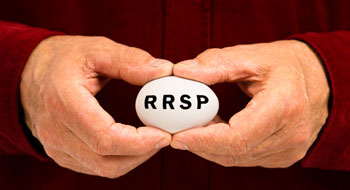

Many employees look forward to this time of year as they await their bonuses for the previous year.
Many employers plan to pay them out before the end of February, in part so employees can use the funds to make registered retirement savings plan contributions against the previous year’s income. Often, employers will go further by routing the gross — with no federal or provincial income tax withheld — directly into a group RRSP.
For a conscientious RRSP saver, it’s a great way to ensure systematic contributions. However, it’s important to understand the mechanics of the process to avoid a nasty tax surprise.
Timing issues
Last year, the 60-day RRSP deadline was Monday, Feb. 29; after that, taxpayers couldn’t claim deposits against 2015 income. When people deposit a bonus directly into an RRSP, with no taxes withheld, they’re using earnings taxable in 2016 to reduce income taxable in 2015.
Read: Pay increases to stagnate in 2017: survey
To illustrate, let’s assume Bonnie claimed no RRSP contributions for 2014 and her marginal tax rate is a constant 40 per cent. She earned a base salary of $90,000 paid in 2015 and a bonus of $10,000 paid in February 2016. By making the RRSP contribution in February 2016, she reduced her 2015 taxable income to $80,000, yielding a tax refund of $4,000. If Bonnie earned the same $90,000 base salary in 2016, her total income would be $100,000 that year.
Unfortunately, Bonnie receives no further bonus payment after the employer terminates her at the end of 2016.
Next year’s return
When it comes time to file taxes in April 2017, Bonnie’s employer has rightly withheld the tax due based on her $90,000 base salary, but she actually earned $100,000 in 2016. She now owes another $4,000 in tax (40 per cent of $10,000). If Bonnie had the foresight to set aside the refund money when she received it in the spring of 2016, she would have the cash necessary to pay the difference.
Read: Fewer Canadians plan RRSP contributions
What should Bonnie have done with the refund? A common recommendation is to make a further RRSP contribution with any refund generated from the first deposit. Doing so enables the taxpayer to boost the RRSP each year by repeatedly applying the tax refunds to pre-fund the tax liability on the eventual drawdown.
But in this case, had Bonnie made that second RRSP contribution, it would have generated a corresponding refund of $1,600 (40 per cent of $4,000). That certainly would have helped build her retirement savings, but from a cash-flow perspective, she would still be $2,400 short of the $4,000 she needs to pay her 2016 tax on the bonus.
Could it be worse?
On a rolling annual basis, if Bonnie has a consistent income and RRSP deposit habit, she may never notice the issue, at least not until the year after she retires.
On the negative side, what if Bonnie had a $40,000 one-time bonus that she used to catch up on carry-forward RRSP room? That could play havoc with her cash flow when it comes to filing her taxes the following year.
Read: RRSP deadline causes Canadians stress
Be aware that premiums for Canada Pension Plan and employment insurance are applicable to bonus payments. So if the full bonus goes into an RRSP, the employer will be taking those CPP and EI deductions out of the employee’s regular pay.
Though not as substantial as the income tax implications, the deductions explain the slightly lighter regular paycheque the employee would receive at the end of February.
Doug Carroll is vice-president for tax and estate planning at Invesco Canada Ltd. This article originally appeared in the February 2016 edition of Benefits Canada‘s sister publication, Advisor’s Edge Report.
